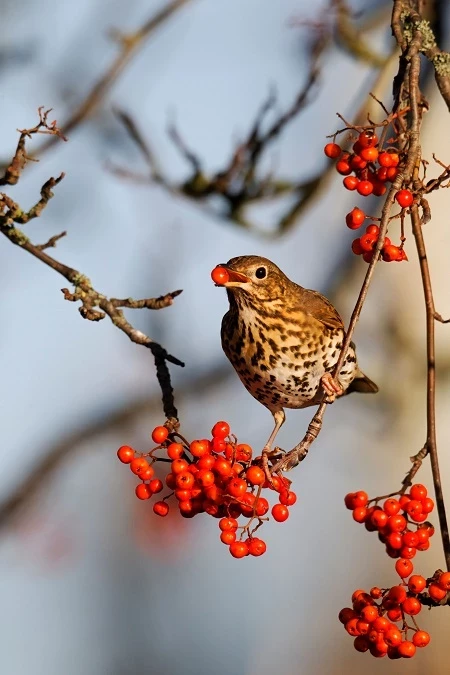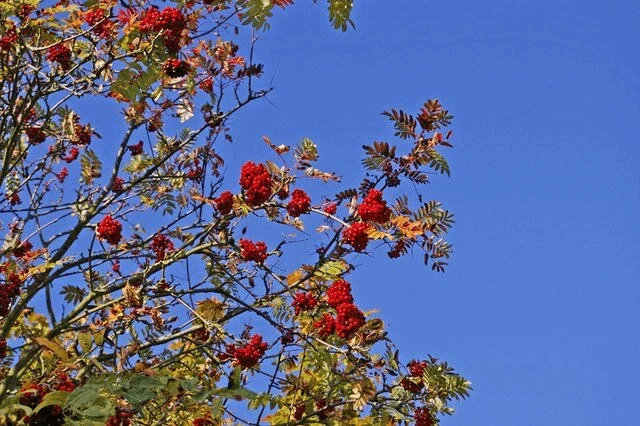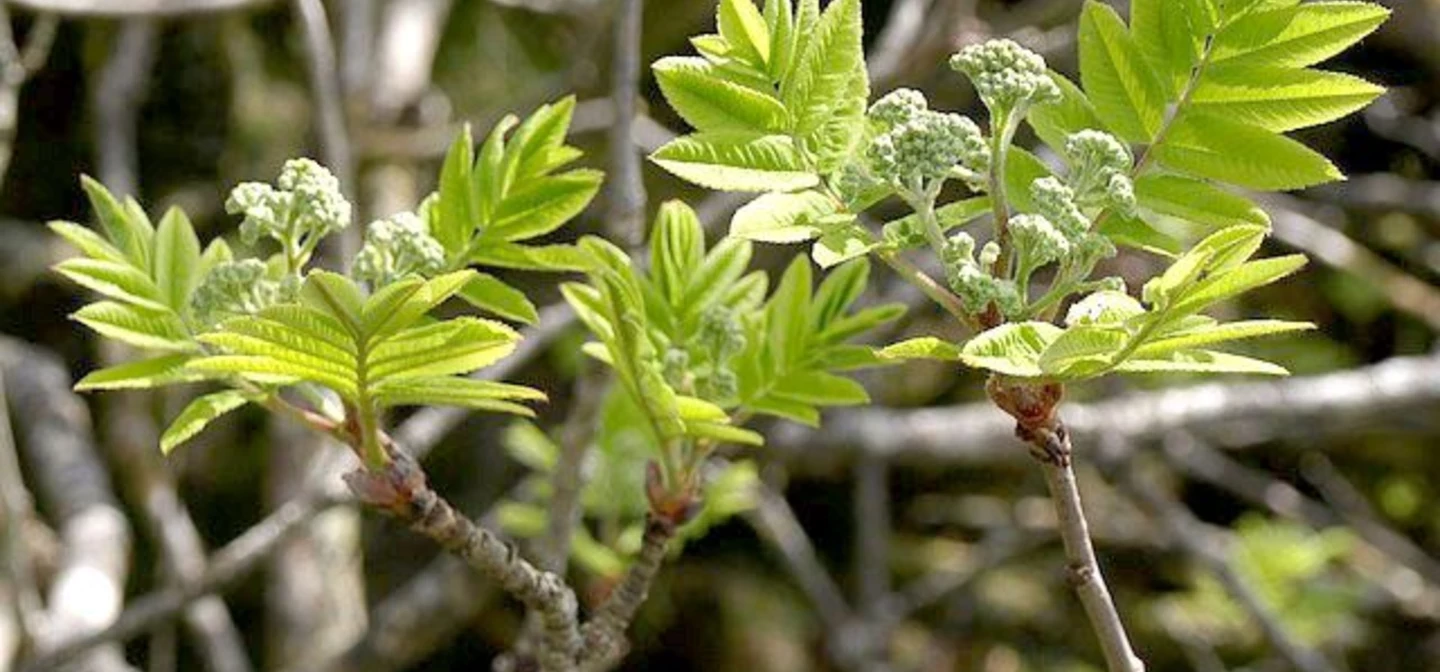
Rowan tree
This colourful tree is traditionally planted to ward off witches!
Important to wildlife
The colourful rowan, or mountain ash, wears clusters of white blossoms in spring and rusty red berries in autumn. It’s an important tree for wildlife in the cemetery. Moth caterpillars eat the leaves, bees and other insects feast on the flowers, and birds love the berries.
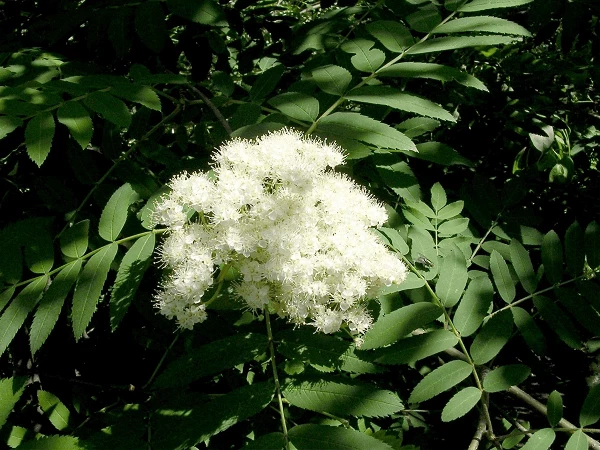
Native to Britain and northern Europe
The rowan is native to Britain and northern Europe. You can still see it growing wild, especially in Scotland, and it is very popular tree for planting in streets, parks and gardens.
Rowan has traditionally been used to protect people, homes and animals from evil spirits, witches and fairies. In Ireland and Scotland they are often planted by front doors and gates, or bundles of rowan twigs are hung above the door. It’s believed to be very bad luck indeed to cut down a rowan tree.
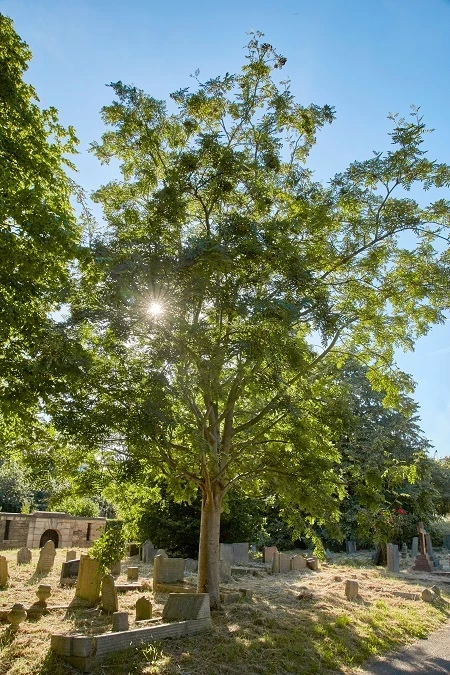
Red berries
Red is said to be the best colour to protect against being enchanted, so the rowan’s bright berries and autumn leaves may be the key to its reputation. In many places in Britain, people used to carry a simple rowan twig cross, tied with red thread, for protection.
Rowan berries taste very bitter when raw, but are used across Europe to make jams and drinks, including ale and cider. Its wood is popular for making walking sticks, tool handles and spinning wheels.
